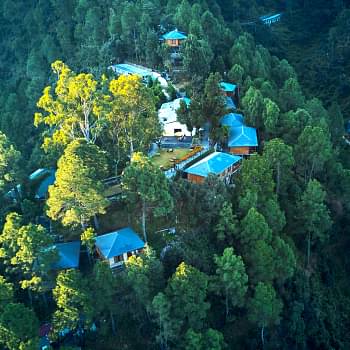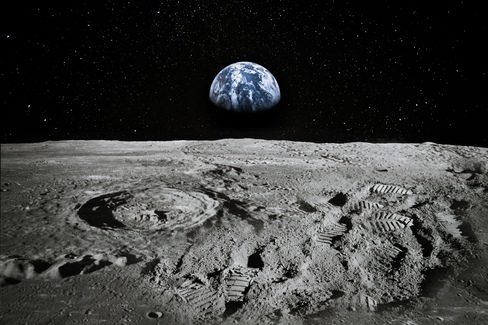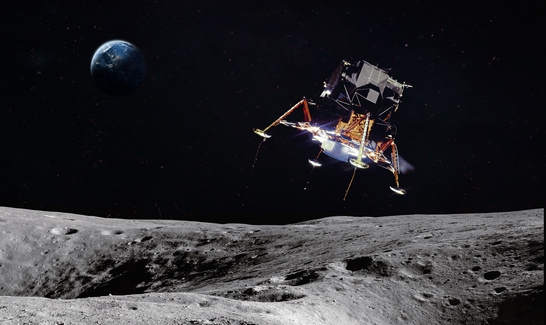August 24, 2023
Chandrayaan-3 Mission: A Milestone in India's Lunar Exploration History
CM Content Team


View all
140+
Resorts
August 24, 2023
CM Content Team
India has accomplished an unprecedented feat by becoming the first country to achieve a soft landing on the Lunar South Pole with its Chandrayaan-3 mission. The terrain's incredible complexity and freezing temperatures made this task extraordinarily difficult. Craters that haven't seen sunlight in millions of years and the past failures of nations such as Israel and Russia highlight the tremendous challenge overcome by the successful Chandrayaan-3 landing.

The South Pole of the moon has been an appealing target for many countries. It's believed to harbor a substantial reserve of water ice, a precious resource that could be utilized for making drinking water, oxygen, and even hydrogen for rocket fuel.
The extreme cold also means that geological material remains unaltered, which could provide crucial insights into the early solar system.
The possibility of finding volatiles like methane and ammonia adds further intrigue, as does the area's potential for radio astronomy, notably around Malapert Mountain.
The South Pole region is home to the Aitken basin, the largest impact basin on the moon, a spot that will help unravel the moon's formation and evolution.
The mission includes the Vikram Lander, which will carry out vital scientific operations, such as measuring thermal conductivity and estimating plasma density. The Chandrayaan-3 rover, also known as the Pragyan rover, will assist in studying the lunar surface's mineral composition. With a planned operational life of one lunar day, or 14 Earth days, the Chandrayaan-3 landing has set the stage for comprehensive lunar exploration.

The Chandrayaan-3 launch is not the end of India's ambitions in space. Following the successful landing, India is preparing for its next significant mission, Aditya L1, slated to launch in September 2023. This will be India's first solar mission, and it aims to unravel one of the sun's most perplexing mysteries: why the sun's corona is so much hotter than its surface? Aditya L1 will also analyze space weather and the sun's magnetic field.
The Chandrayaan-3 launch, and subsequent landing have indeed scripted history, putting India at the forefront of lunar exploration. The mission's payloads, including the Pragyan rover, will undoubtedly contribute significant scientific findings that may revolutionize our understanding of the moon, and possibly even pave the way for human exploration.
The Chandrayaan- 3 mission, coupled with the upcoming Aditya L1, signals a new era in India's space endeavors. The anticipation surrounding what secrets these missions may reveal adds to the excitement of India's continued pursuit of cosmic knowledge.
Mahindra Holidays & Resorts India Ltd. (MHRIL), a part of Leisure and Hospitality sector of the Mahindra Group, offers quality family holidays primarily through vacation ownership memberships and brings to the industry values such as reliability, trust and customer satisfaction. Started in 1996, the company's flagship brand ‘Club Mahindra’, today has over 300,000 members , who can holiday at 140+ resorts in India and abroad.
We use cookies to personalise content and to provide you with an improved user experience.By Continuing to browse this site you consent to the use of cookies.Please visit our cookie policy for further details.

Welcome to ClubMahindra.com In order to provide a personalised experience for you, we use cookies to enable some website functionality. Cookies help us see which articles most interest you; allow you to easily share articles on social media channels; permit us to deliver content personalised to your interests and locations; along with many other site benefits. For more information, please review our Cookie Policy
When you visit any website, it may store or retrieve information on your browser, mostly in the form of cookies. This information might be about you, your preferences or your device and is mostly used to make the site work as you expect it to. The information does not usually directly identify you, but it can give you a more personalized web experience. Because we respect your right to privacy, you can choose not to allow some types of cookies. Click on the different category headings to find out more and change our default settings. However, blocking some types of cookies may impact your experience of the site and the services we are able to offer.
Because we respect your right to privacy, you can choose not to allow some types of cookies and you have the right to withdraw your consent by send a mail to email id [email protected]
These cookies are essential in order to enable you to move around the site and use its features, such as accessing secure areas of the site. Without these cookies, services you have asked for cannot be provided.
These cookies allow us to employ data analytics so we can measure and improve the performance of our site and provide more relevant content to you. These cookies don't collect information that identifies a visitor down to an individual level that is available to us. These cookies are not passing personally identifiable information to any external third party other than in limited cases when we engage a service provider to act on our behalf but who is then unable to use the data for their own purposes.
Performance cookies are generally third-party cookies from vendors we work with or who work on our behalf that collect information about your visit and use of the Club Mahindra website, for instance which pages you visit the most often, and if you get error messages from web pages. These cookies don't collect information that identifies a visitor. All information these cookies collect is anonymous and is only used to improve your overall experience on how the website works. Third party vendors may have access to this data and may use it to improve their overall services and offerings.
Functionality cookies allow a site to remember choices you make (such as your user name, language or the region you are in) and provide more enhanced, personal features. These cookies cannot track your browsing activity on other websites. They don't gather any information about you that could be used for advertising or remembering where you've been on the Internet outside our site.
Third-party advertising and social media cookies are used to (1) deliver advertisements more relevant to you and your interests; (2) limit the number of times you see an advertisement; (3) help measure the effectiveness of the advertising campaign; and (4) understand people's behaviour after they view an advertisement. They are usually placed on behalf of advertising networks with the site operator's permission. They remember that you have visited a site and quite often they will be linked to site functionality provided by the other organization. This may impact the content and messages you see on other websites you visit. If you do not allow these cookies you may not be able to use or see certain these sharing tools content on our website.